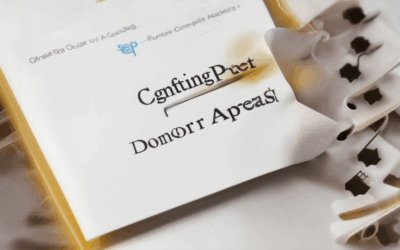Annual fundraising campaigns play a pivotal role in the success and growth of nonprofit organizations, serving as a cornerstone for achieving mission-driven goals. These campaigns are not just about raising funds; they’re about fostering lasting relationships with donors, inspiring community engagement, and driving organizational impact. However, crafting a successful annual fundraising campaign requires careful planning, innovative strategies, and a deep understanding of donor behavior. Whether you’re a seasoned development professional or new to the field, mastering the art of annual fundraising can make a transformative difference in your organization’s ability to thrive. This article delves into proven strategies, actionable tips, and real-world examples to help you ignite your annual fundraising campaigns, ensuring they resonate with your audience and achieve maximum impact.
Key Takeaways
- Define clear fundraising goals and align them with the organization’s mission.
- Outline strategic priorities and evaluate initiatives based on alignment and capacity.
- Diversify revenue streams, including individual donors, foundations, corporations, and online platforms.
- Create a structured timeline with assigned responsibilities for accountability.
- Engage stakeholders through donor cultivation and advocacy campaigns.
- Use KPIs to measure success, including donations, new donors, and event attendance.
- Allocate budgets effectively for various fundraising activities.
- Proactively manage risks with contingency plans.
- Align fundraising strategies with the organization’s broader goals.
- Regularly review and update the fundraising plan to adapt to changes.
- Stay informed about fundraising trends and continuously improve strategies.
- Utilize tools like NPO Expert and fundraising software for better efficiency.
- Apply the 4 Ps—Passion, Persistence, Philanthropy, People—to enhance fundraising efforts.
- Understand the annual fundraiser as a long-term strategy for consistent funding.
- Implement a mix of tactics, including direct mail, email, social media, events, and online giving.
- Focus on donor retention and community engagement to build lasting support.
- Ensure predictable revenue and long-term organizational sustainability.

What is an Annual Fundraising Campaign?
An annual fundraising campaign is a structured, organized effort by nonprofit organizations to consistently raise funds throughout the year. These campaigns focus on building lasting relationships with donors and securing stable financial support to sustain organizational operations and programs.
Key Components of Annual Fundraising Campaigns
- Direct Outreach :
- Utilizes methods like direct mail, email newsletters, and personalized letters to reach potential donors.
- Includes telephone solicitations and targeted social media campaigns to engage supporters effectively.
- Personal Engagement :
- Involves face-to-face interactions such as home visits, donor appreciation events, and personalized meetings with development officers.
- Establishes trust and strengthens relationships between donors and the organization.
- Special Events :
- Hosts events like charity auctions, galas, and community fundraisers to attract larger donations.
- Leverages unique experiences or memorabilia to drive contributions.
Goals of Annual Campaigns
- To establish a predictable revenue stream for the organization.
- To foster long-term donor relationships and increase retention rates.
- To provide consistent support for critical programs and initiatives.
Examples of Successful Campaigns
- Charity Auctions : Unique items or experiences are sold to benefit the cause.
- Giving Tuesday Campaigns : Online drives encouraging donations during a specific timeframe.
- Legacy Giving Programs : Encouraging donors to leave a legacy through estate planning.
Impact of Annual Campaigns
By consistently engaging donors, annual campaigns enable organizations to allocate resources effectively, ensuring continued delivery of vital services and programs. These efforts often lead to increased visibility, trust, and sustained growth for the nonprofit.
Explore additional resources on fundraising techniques and best practices.
The Rule of 7 in Fundraising
The Rule of 7 is a fundamental principle in fundraising that emphasizes the importance of consistent donor engagement. Here’s a breakdown of how it works:
According to the Rule of 7, you should make at least seven meaningful contacts with a donor within one year after they make a donation. This means that for every request you make for a gift, you need to have seven other meaningful interactions with the donor.
Why the Rule of 7 Matters
- Building Trust: Consistent communication helps build trust with donors, encouraging them to support your organization again in the future.
- Increasing Donor Loyalty: Donors are more likely to give again when they feel appreciated and regularly connected with your cause.
- Maximizing Impact: By staying in touch, you ensure that your donors feel their contributions are making a difference, which can lead to larger gifts over time.
How to Apply the Rule of 7
- Immediate Follow-Up: Send a thank-you note or email right after a donation to express gratitude and establish a connection.
- Ongoing Engagement: Keep donors informed about your organization’s progress, events, and needs through newsletters, updates, and invitations.
- Personalized Communication: Tailor your messages to reflect the donor’s interests and past contributions to make interactions feel more meaningful.
- Consistency is Key: Stick to a regular schedule for communication to reinforce your commitment to donor relationships.
Best Practices for the Rule of 7
- Track Interactions: Use donor management software to keep track of all communications and ensure you meet the Rule of 7 requirements.
- Use Multiple Channels: Combine emails, phone calls, and social media to reach donors in different ways and increase the frequency of engagement without overwhelming them.
- Be Responsive: Respond promptly to donor inquiries and feedback to build trust and encourage continued engagement.
By consistently applying the Rule of 7, you can foster long-term relationships with your donors, leading to increased retention and overall fundraising success.

The 80/20 Rule in Fundraising
The 80/20 rule, also known as the Pareto principle, applies to fundraising by suggesting that a small percentage of donors (20%) contribute the majority of funds (80%) to an organization. This principle emphasizes the importance of focusing efforts on identifying and engaging key supporters who have the potential to make significant contributions.
Why the 80/20 Rule Matters
- Donor Segmentation: By identifying your most generous donors, you can tailor strategies to retain and grow these relationships, which is cost-effective compared to acquiring new donors.
- Focus on Major Gifts: While 20% of donations come from a small group of high-capacity donors, the remaining 80% can be cultivated from a broader audience through targeted outreach and stewardship.
- Efficiency in Resource Allocation: This approach allows nonprofits to allocate resources strategically, focusing on initiatives that yield the highest returns.
How to Implement the 80/20 Rule
- Donor Research: Use data analytics to identify individuals and families with the capacity and inclination to make significant gifts.
- Major Donor Cultivation: Develop personalized engagement strategies, including events, personalized communication, and volunteer opportunities.
- Acknowledge Contributions: Regularly recognize and thank donors to strengthen relationships and encourage continued support.
Tips for Maximizing the 80/20 Rule
- Diversify Funding Streams: While major gifts are critical, don’t overlook smaller contributions from individual donors and institutional grants.
- Engage Volunteers: Leverage volunteers to expand your network and identify potential donors within their circles.
- Utilize Technology: Implement donor management systems to track and analyze supporter data, enabling better targeting of fundraising efforts.
For more insights on leveraging the 80/20 rule and other fundraising strategies, explore NPO Expert’s comprehensive guides .

What is an Annual Fundraising Plan?
An annual fundraising plan is a strategic document created by nonprofit organizations to outline their fundraising goals, activities, and strategies for the upcoming fiscal year. This plan serves as a roadmap to secure the necessary resources and support to achieve the organization’s mission and objectives.
Key Components of an Annual Fundraising Plan
- Fundraising Goals
- Define measurable targets for individual donations, grants, corporate sponsorships, and special events.
- Establish a total fundraising amount and break it down by source (e.g., grants, major gifts, events).
- Strategic Priorities
- Identify key initiatives aligned with the organization’s mission and goals.
- Prioritize funding opportunities based on alignment with the organization’s cause and capacity to execute.
- Revenue Streams
- Outline potential sources of funding, including individual donors, foundations, corporations, and online giving platforms.
- Consider diversifying income streams to reduce reliance on any single source.
- Implementation Timeline
- Break down the fundraising activities into quarterly or monthly goals.
- Assign responsibilities to team members or external partners to ensure accountability.
- Stakeholder Engagement
- Identify key stakeholders, including board members, volunteers, and donors.
- Develop strategies to involve these individuals in fundraising efforts, such as donor cultivation and advocacy campaigns.
- Evaluation Metrics
- Define key performance indicators (KPIs) to measure the success of fundraising efforts.
- Include metrics like dollar amount raised, number of new donors acquired, and event attendance rates.
- Budget Allocation
- Allocate funds for marketing, outreach, and administrative costs associated with fundraising activities.
- Plan for expenses related to events, donor acknowledgment, and reporting.
- Risk Management
- Identify potential challenges, such as economic downturns or changes in donor behavior.
- Develop contingency plans to mitigate risks and adapt to unforeseen circumstances.
Strategic Planning for Success
- Align the fundraising plan with the organization’s overall strategy to ensure consistency and impact.
- Regularly review and update the plan to reflect changes in organizational priorities or market conditions.
- Engage in continuous learning and adaptation to stay ahead of fundraising trends and competition.
Tools and Resources
To create an effective annual fundraising plan, consider using tools and resources from trusted platforms like NPO Expert . Their platform offers customizable templates, guides, and best practices tailored for nonprofit organizations. Additionally, explore fundraising software solutions that automate donor management, campaign tracking, and reporting.
By following these steps, nonprofits can develop a robust annual fundraising plan that drives sustainable growth and supports their mission-driven work.
The 4 P’s of Fundraising
The 4 P’s of fundraising are essential strategies that help drive successful campaigns. These principles ensure that your efforts are organized, focused, and impactful.
- Passion : At the heart of every successful fundraiser is passion. This emotion fuels your commitment to the cause, inspiring others to believe in your mission and contribute. Passionate advocates create a ripple effect, motivating others to take action.
- Persistence : Fundraising requires resilience. Persistent individuals understand that success doesn’t come overnight. They adapt their strategies, learn from setbacks, and persist until they achieve their goals. This determination is key to long-term success.
- Philanthropy : Philanthropy is the act of giving, which lies at the core of fundraising. By fostering a culture of giving, you encourage others to support your cause. Whether through donations or volunteer work, philanthropy strengthens your organizational capacity.
- People-Focused Approach : Building strong relationships is the cornerstone of fundraising. Connecting with donors, volunteers, and supporters helps you inspire and engage them. A people-focused strategy involves understanding their motivations, making them feel valued, and involving them in your organization’s journey.
By integrating these four P’s into your fundraising efforts, you create a powerful framework that drives impact and builds lasting support for your cause.

Annual Fundraiser
An annual fundraiser refers to a series of organized campaigns, initiatives, and strategies employed by nonprofit organizations, educational institutions, museums, healthcare facilities, and other entities to generate consistent and sustainable funding on an yearly basis.
What is an Annual Fundraiser?
Annual fundraisers are long-term strategies designed to cultivate donors, engage the community, and secure contributions to support organizational missions and programs. Unlike one-time events or special appeals, annual fundraising efforts aim to create a steady income stream through recurring donations, grants, and sponsorships.
Key Components of an Annual Fundraiser
- Diversified Tactics: Involves a mix of direct mail, email campaigns, social media engagement, events, and online giving platforms.
- Donor Retention: Focuses on nurturing relationships with existing donors to ensure continued support and loyalty.
- Predictable Revenue: Provides organizations with a stable financial foundation by spreading fundraising efforts throughout the year.
- Alignment with Mission: Ties fundraising activities closely with the organization’s goals and community impact.
Benefits of an Annual Fundraiser
- Stability and Predictability: Ensures consistent funding for organizational programs and operations.
- Built-In Momentum: Encourages year-round participation from donors and supporters.
- Community Engagement: Strengthens ties with stakeholders and fosters a sense of belonging among contributors.
- Long-Term Sustainability: Helps organizations plan effectively for future initiatives and expansion.
How to Successfully Implement an Annual Fundraiser
- Plan Thoroughly: Develop a detailed strategy outlining objectives, timelines, and key activities.
- Diversify Funding Channels: Utilize multiple methods such as individual donations, corporate sponsorships, and grant applications.
- Regular Communication: Maintain consistent engagement with donors through newsletters, updates, and personalized outreach.
- Measure and Adapt: Track progress using metrics like donation rates, retention percentages, and overall revenue.
Conclusion
An annual fundraiser is a cornerstone of modern fundraising efforts, providing organizations with the resources needed to achieve their missions while fostering lasting relationships with their communities. By implementing effective strategies and staying committed to donor-centric approaches, organizations can maximize the impact of their annual fundraising initiatives.





0 Comments